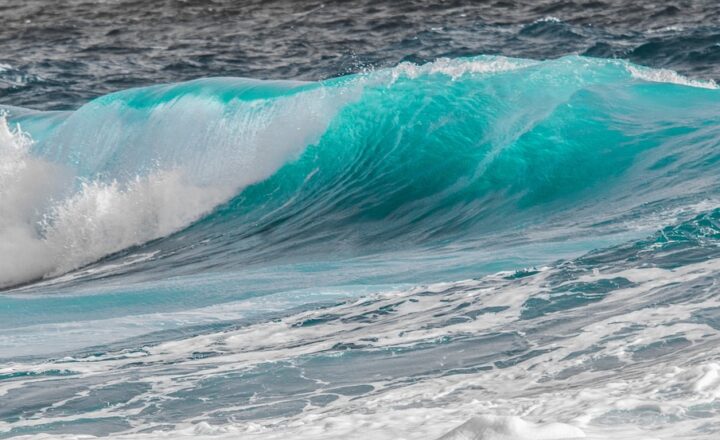How Rivers Bring Nutrients to Oceans and Support Marine Life
November 14, 2024

Rivers are often seen as mere contributors to the hydrological cycle or picturesque flows through landscapes. However, their role goes far beyond that. They serve as vital conduits, transporting nutrients from freshwater sources into the expansive oceans. This nutrient transport is crucial for marine life, ecosystems, and ultimately, human survival. In this article, we will explore how rivers contribute to the health of oceans and support marine life in a comprehensive manner.
1. The Journey of Nutrients: From Rivers to Oceans
Rivers collect nutrients from various sources, including soil erosion, agricultural runoff, and organic matter decomposition. These substances then travel downstream and are carried into the ocean. Here’s how this journey unfolds:
- Soil Erosion: As rainwater washes over the land, it dislodges soil particles that carry essential minerals and organic materials. This sediment is vital for marine plants, particularly phytoplankton, the foundation of the oceanic food web.
- Agricultural Runoff: Fertilizers applied in agricultural practices can wash into rivers during rainfall, contributing nitrogen, phosphorus, and potassium—macronutrients that stimulate growth in marine life.
- Organic Decomposition: As organic matter in rivers decomposes, nutrients are released into the water, which are essential for sustaining aquatic ecosystems both in rivers and when they merge with oceans.
These processes ensure that rivers remain a lifeline for marine ecosystems, transferring vital nutrients that promote biodiversity and support complex food webs.
2. Nutrients in Action: The Role of Phytoplankton
Phytoplankton are microscopic plants that thrive on the nutrients brought to oceans by rivers. These tiny organisms play a pivotal role in marine food chains, and their high productivity is essential for the ocean’s health. Here are some key points about phytoplankton:
- Foundation of the Food Web: Phytoplankton form the basis of the marine food web, serving as the primary food source for a variety of marine species, including zooplankton, small fish, and even large marine mammals.
- Carbon Sequestration: Through photosynthesis, phytoplankton utilize carbon dioxide, playing a crucial role in reducing atmospheric CO2 and helping to regulate climate. The more nutrients they receive from rivers, the more they can grow and perform this vital function.
- Oxygen Production: Phytoplankton are responsible for producing approximately 50% of the oxygen we breathe. Thus, their growth fueled by riverine nutrients indirectly sustains life on Earth.
Without the influx of nutrients from rivers, phytoplankton populations would decline, leading to far-reaching consequences for the entire marine ecosystem.
3. The Impact of Eutrophication
While rivers contribute significantly to marine ecosystems, they can also lead to problems like eutrophication when nutrient levels become excessive due to agricultural runoff or pollution. Here’s why this is a concern:
- Algal Blooms: Excessive nutrients can lead to algal blooms, which can block sunlight and deplete oxygen in the water, creating “dead zones” where marine life cannot survive.
- Toxicity: Some algal blooms produce toxins that can harm marine life and pose health risks to humans who consume contaminated seafood or drink contaminated water.
- Habitat Destruction: The proliferation of harmful algae can disrupt food webs, resulting in the decline of fish populations and harming commercial fisheries.
Addressing nutrient management in rivers is crucial to mitigating the effects of eutrophication and ensuring the long-term health of marine ecosystems.
4. The Diversity of Marine Life Sustained by Riverine Nutrients
The nutrients carried by rivers support a rich diversity of marine life. Here are some examples of marine organisms that benefit directly from nutrient influx:
- Fish Species: The health of fish populations relies on the availability of phytoplankton and the subsequent food chain. Nutrient-rich waters near river mouths attract various fish species, crucial for both commercial and recreational fishing industries.
- Coral Reefs: Coral ecosystems thrive in areas with nutrient inputs. Many coral species depend on zooplankton and phytoplankton, which flourish due to the nutrients carried by rivers, contributing to the overall biodiversity of marine life.
- Marine Mammals: Species such as dolphins and whales follow fish migrations driven by nutrient availability, highlighting how interconnected the marine food web is, influenced directly by riverine processes.
Through these complex interactions, rivers play an irreplaceable role in sustaining marine biodiversity and the overall health of oceanic environments.
5. Human Responsibilities: Protecting Riverine Ecosystems
Given the critical role rivers play in supporting marine life, it is essential for humans to recognize their responsibility in protecting and preserving river ecosystems. Here are some important actions to consider:
- Sustainable Farming Practices: Implementing sustainable agricultural techniques can minimize runoff, reducing the excess nutrients that lead to eutrophication in coastal waters.
- Pollution Prevention: Minimizing industrial pollution and waste disposal into rivers can significantly reduce nutrient loads that harm marine environments.
- Habitat Restoration: Supporting projects that restore river habitats can improve water quality and enhance the natural filtration systems, ensuring a healthier flow into oceans.
By embracing sustainable practices, we can protect our rivers, their ecosystems, and the marine life that depends on them, thereby promoting a balanced relationship between land and sea.
Conclusion
Rivers are much more than mere bodies of water; they are crucial lifelines that nourish our oceans and support marine life. Through their transport of essential nutrients, they foster biodiversity, contribute to critical ecological processes, and maintain the health of our planet’s oceans. As we work to understand and protect these vital waterways, we ensure a sustainable future for both our oceans and the myriad forms of life they support. We have the ability to sustain this delicate balance and recognize that the protection of riverine health is indispensable for the vitality of marine ecosystems, humans, and the Earth itself.








